History

The Time Line of the Wharves
Roman and Anglo Saxon (upto 1066)
Pre History
0500East-the-Water sits on folded and eroded Carboniferous rocks, in which some layers proved suitable for building stone. In a belt running east to west across the middle of the community these rocks also contain seams of carbonised plant material in the form of anthracite or, less commonly, the carbonaceous pigment…
Read moreThe Turbulent Stream
0600
It was the river that defined the location of East-the-Water. The Celts named it Torridge, meaning ‘turbulent stream,’ and, as it rises on the western moors, heavy rainfall can certainly make it live up to its Celtic name. But it is not rain alone that accounts for the strong currents…
Read moreRoman and Saxon Period
0700Once the Romans arrived, they established a transit camp in nearby Alverdiscott. This lay on their route to Great Torrington, but also provided a watchful presence over the Bideford crossing. Upon the departure of the Romans, a Saxon administration took over. East-the-Water fell at the NE edge of the Hundred…
Read moreNorman (1066 – 1154)
Norman Conquest and the Establishment of the Grenvilles
1000The Norman conquest saw the manor of Bideford pass from Brictric to William the Conqueror’s wife Matilda of Flanders. Thus becoming an ancient demesne, exempt from tax and toll by virtue of belonging to the crown. Upon her death, in 1083, it reverted to the regent, thence to be granted…
Read moreMedieval Relics
20th March 1100
The crown may have granted the manor of Bideford to Sir Richard de Granville in reward for his service in Wales, for it made strategic sense. The Granville family also held the Manor of Stowe, just over the border in Cornwall, and were thus well placed to defend their stake…
Read morePlantagenet (1154 – 1399)
13th Century
20th March 1200
In the late 13th C. the Long Bridge was built and a chapel erected at either end. In later diagrams and pictures the chapel in East-the-Water is shown immediately beside the bridge and upstream of it. In a plan of c. 1717 there is a similarly positioned building shown on…
Read moreLancastrian (1399 - 1471)
No announcements found
House of York (1460 – 1485)
A Better Way to Cross
1474
Legend has it that the site of the current Long Bridge was determined when a parish priest dreamt of a boulder rolling down to the shore to mark the spot, a boulder that was subsequently found. Within sections of the modern church such instances of divine guidance may still be…
Read moreTudor (1485 – 1603)
A Leader in Ship Building
1549By 1549 the Granville family, besides changing the spelling of their name yet again, had established themselves in both manors of Bideford and Stowe, with branches of the family overseeing each. Richard Greynfelde (d 1549/50) was clearly based in Bideford, as he left his mansion house in the town to…
Read moreReligious Refugees
1572
In 1572 simmering unrest in France between the ruling Roman Catholic elite and minority Calvinist Protestants (the Huguenots) came to a head in the Saint Bartholomew’s Day Massacre. The assassination of several Huguenot leaders was followed by mob violence against the group. Many leading Huguenots were killed and a wave…
Read moreSir Richard Grenville’s Quays
20th March 1574
The Grenville with whom Bideford is most closely associated is Sir Richard (1542-1591). Now known to have been born within the town, his rise at the court of Elizabeth I saw Bideford re-incorporated as a borough (in 1574). At that time Sir Richard gifted the mayor, aldermen, and burgesses with…
Read moreSettling Overseas
1584
Sir Richard Grenville had married Mary St Ledger, and in 1569 he was briefly active alongside the St Ledger family in attempts to settle southern Ireland, holding the position of Sheriff of Cork. The English interference in the affairs of Munster, of which Grenville was a part, prompted a backlash…
Read moreHostilities with Spain and a New Place
1585
In 1585 Sir Richard Grenville’s capture of the Spanish vessel Santa Maria de Vincenz´ provided him with both ample funds and a workforce, in the form of captured Spanish prisoners. He put both to work constructing a grand mansion for himself, known as New Place. Forcing the prisoners to labour…
Read moreThe original quay (some time prior to 1587)
1586A plan from c. 1717 labels a series of the quays. One is shown as simply The Key. The lack of a need to qualify its name implies that it pre-dated the other quays. Later evidence identifies that the site of The Key still formed part of the manor lands….
Read moreExpanding Trade
1590
Bideford’s maritime trade continued to flourish, not least due to the colonial efforts of Sir Richard Grenville’s cousin Sir Francis Drake. Tobacco from America began to pass through the port and with it came examples of Native American clay pipes, the local pipe-clay proving ideal for replicating these. A return…
Read moreStuart (1603 – 1714)
Building Colonies
1606The year 1606 saw the founding of the Virginia Company to promote the production of tobacco in the colony, in 1607 Jamestown was founded, and by 1608 the colony had its first true leader and corporate evangelist, in the person of John Smith. Yet the growth of the Virginia colony…
Read moreCivil War
1642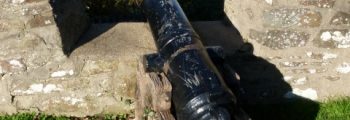
With the outbreak of civil war in 1642, the royalist Granvilles found themselves at odds with the parliamentarian town’s-folk of Bideford. Sir Richard Grenville (grandson of the last mentioned Sir Richard) became a prominent royalist leader and rallied the Cornish behind the crown. Meanwhile, the Bideford-based Sir Bevill Grenville led…
Read morePlague Town
20th March 1646
Having escaped three earlier brushes with death, Bideford merchant John Strange ( or Strang) had a reputation as a survivor. John rose to the position of town Mayor and his family later traded out of East-the-Water. When his portrait was painted in c. 1642, it portrayed all three incidents in…
Read moreThe 1663 Building of a New Quay
20th March 1663The Magna Britannica (published in 1822) reported that “the Quay, which was constructed in 1663, belongs to the corporation,” thus providing a date that has found its way into other later publications (e.g.White’s Directory for 1850). More properly, it seems that 1663 was the year in which the building of…
Read moreButtering the American Expansion
20th March 1672As the colonies expanded, Bideford’s potteries found a ready market for their pots. In the 17th C. this pottery was produced rapidly and in large volumes, so as to keep the cost down. In particularly great demand were vessels used to ship butter, it having been salted to preserve it….
Read moreCod and ’backy
20th March 1678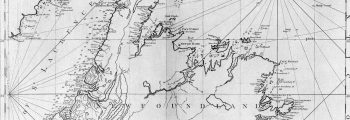
Sir John Berry’s census of 1675 lists 19 Bideford boats fishing for Cod off Newfoundland. With them were 34 boats from other West Country ports, but only one from London and one from Topsham. In 1678 there were some 25 Bideford vessels, but by 1699 a change was becoming apparent,…
Read moreThe Earliest Diagram of the Quays
20th March 1690
It is a plan, produced to support the extension of the Established Key, or its legal approval, that provides the first definitive indication of where the Bideford quays lay. Fielder dates this as c. 1690, which seems too early. Carter and Carter date it 1717 (which, from the evidence below,…
Read moreSudden Death and the Granville Lands
20th March 1701
After the 1st Earl of Bath, succeeding generations of Granvilles seem to have had a habit of dying just as they came to the point of power and influence, for John’s eldest son, and heir, Charles Granville (-1701) shot himself shortly after his father died, an incident alleged by some…
Read moreA Fine Harbour on the East
20th March 1701In 1701 John Prince (1643-1723) published his Worthies of Devon, in which he states, concerning the Long Bridge – “On the east side of this bridge is a very fine harbor for ships of good burthen; where they lie and unload in the very bosom of the town, at a…
Read moreGeorgian (1714 – 1837)
Trade and Transportation
20th March 1716Sailing an empty ship was unprofitable, so most merchants favoured routes that allowed both outward and return cargos. For example John Davie liked to export earthenware and import tobacco in a single round trip. Newfoundland fishermen had less room for outward commercial cargos as they needed to carry provisions and…
Read moreTwo Mathematicians
20th March 17181718 saw the birth in Bideford of Abraham Donn, the first of two brothers, the other being Benjamin Donne (b. 1729). Both would prove to be eminent mathematicians, though Abraham died quite young. Benjamin, who survived him, reverted the family name to its original form of Donne, but only after…
Read moreThe Torridge Undoes the Plans of Men
20th March 1722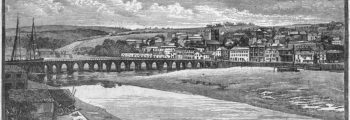
In 1722 a dispute arose between the feoffes of the Long Bridge and the lord of the manor, concerning rights to a section of the East-the-Water foreshore on which their tenant wanted to construct a quay. Thus confirming that the manor exercised rights over part of the eastern shore. About…
Read moreDefoe’s Account
20th March 1724
Published in 1724, Daniel Defoe’s account of his visit to the SW peninsular reported that the Port of Bideford’s trade was, by then, mostly in fish, but that rock salt, for preserving the local Herring catch, was also being shipped into the town from Liverpool. Defoe noted “There is indeed,…
Read moreThe Manor Quay Changes Hands
20th March 1750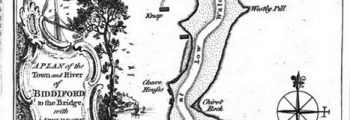
Around 1750 the Manor, and with it The Key, changed hands, passing from the descendants of the Grenville family to John Cleveland of Tapley, the grandson of John Davie. New ownership often brought new investment, so it is of interest to find it said that in 1758 the Lord of…
Read moreAnother Map
20th March 1756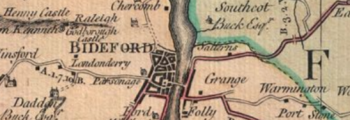
On Donne’s 1756 one inch to the mile survey, East-the-Water still shows as little more than a ribbon of development. In Torrington Street this extends southward to a point due east of Ford House, at which point a street, with accompanying properties, runs directly inland for a short distance. Adjacent…
Read moreFrom Fishermen to Middlemen
20th March 1757By the time of Defoe’s account, deep sea fishing was already in decline, American enterprise, piracy and conflicts all having taken their toll. Bideford’s shipmasters ceased fishing themselves and became middlemen, providing transport of prepared fish, much of which ended up in the Mediterranean, from whence the ships could return…
Read moreSeven Years of War
20th March 1759In 1754, competition over trade between Britain, France, and Spain erupted into the Seven Year’s War, during which Bideford hosted French prisoners of war. Bideford was a parole depot, so the French officers were reasonably accommodated, often with their families and in private lodgings. The remainder were held in close…
Read moreAdvent of the Turnpikes
20th March 1763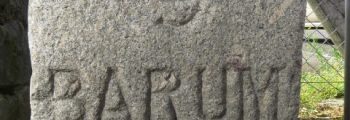
After significant rainfall, the heavy local soils must have made road travel a nightmare, but in 1763 the Barnstaple Turnpike Trust was established, its responsibilities included provision of improved routes from Barnstaple to Bideford as well as a turnpike from East-the-Water to Great Torrington, via the traditional Wear Gifford and…
Read moreThe War with America
20th March 1774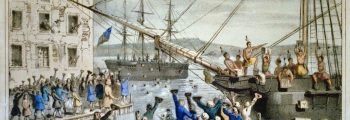
On 31 March 1774 Britain ordered the closure of the port of Boston, thus setting the scene for the American War of Independence (1775-81). The war curtailed Bideford’s foreign trade, forcing a greater reliance on the local trades of shipbuilding and pottery. But it may also have had a sudden…
Read moreMarshall’s account
20th March 1794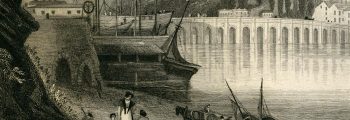
In 1794 Instead Marshall published an account of Bideford in his Rural Economy of the West Country. The war with America had apparently taken its toll, for he suggests the town was “remarkably forbidding,” by virtue of its narrow streets and cheaply built houses. In the open spaces furze faggots…
Read moreAn Irish Rebellion Leaves its Mark
20th March 1798
Overlooking the Torridge, and now vaulting across the Tarka Trail by a stone-built pedestrian bridge, lies the cul-de-sac known as Vinegar Hill. We have, it has been suggested, the Irish Rebellion of 1798 to thank for this unusual name. Fuelled by the revolutionary fervour in France, and also American’s bid…
Read moreAt war with Napoleon
20th March 1809By 1809 Napoleon was seeking to conquer Europe. A French blockade of Baltic timber caused a slump in Torridge-side ship-building. In response, Bideford expertise was shipped to Newfoundland to utilise the timber there. In that same year the first series Ordnance Survey map of Bideford was published. Along with the…
Read moreExodus to Empire
20th March 1820The defeat of Napoleon, together with the Victorian expansion of the British Empire, brought a boom in maritime trade. Bideford’s quays were a hive of activity: large quantities of timber, hemp, and tallow were imported from the Baltic and America; wines and fruits arrived from the Mediterranean, cattle came from…
Read moreCoal, Lime, and Clay
20th March 1823
Culm is a local name for anthracite and an outcrop of culm bearing strata crosses East-the-Water, beneath Mines Road, Eastridge View, and Grange Road, before continuing, under the Torridge, and onward under western Bideford. A lease signed by the Earl of Bath (John Grenville, 1628-1701) suggests this was being exploited…
Read moreThe Western Route
20th March 1824
The road from Bideford to Great Torrington had historically run to the east of the Torridge, departing up the steep hill through East-the-Water then running southward through Weare Giffard. In 1824 that was the route followed by the toll road, but, in that year, an act was passed to enable…
Read moreAn Exodus to Canada and a New Road
20th March 1830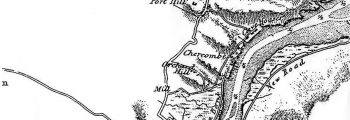
The period from 1830-1844 marked a low point for the economy of Devon and across that period some 1,500 people sailed to Prince Edward Island from the West Country, the majority choosing Bideford as their point of departure. James Yeo’s 283 ton vessel, British Lady (built in 1836) regularly sailed…
Read moreVictorian (1837 – 1901)
The Resurgence of the Eastern Potteries
20th March 1840Bideford’s potteries were still hard at work, but in 1835 the Penny Cyclopedia described them as “principally for the manufacture of flower-pots.” It is true that Bideford’s ceramic industry had always specialised in producing good quality basic wares, however it’s output was far from limited to products for the horticultural…
Read moreGas Arrives in Bideford
20th March 1853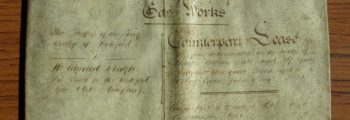
In 1853 the Torrington Lane potteries gained a new neighbour, for, just downhill from them in Nuttaberry, a gasworks opened in East-the-Water, with the gas main running across the river underneath the Long Bridge.
Read moreTurning the Town White
20th March 1856
In 1850 the town was battling outbreaks of cholera and, in the hope of combating the disease, the council ordered its houses to be lime-washed and the street’s to be spread with lime ash. These measures may have been ineffective, but almost overnight they transformed Bideford into Charles Kingsley’s “little…
Read morePicturing the Town
20th March 1856
On 1 Jan 1856, Thomas Honey (whose surname adorns a close in East-the-Water) published the first edition of his Bideford Gazette. It is still in circulation and serves both sides of the water, but now as the advertising-financed Gazette. Henceforth, the Gazette would provide later historians with a far clearer…
Read moreThe Torridge Shifts it Favour Westward
20th March 1871
In 1871 the building of Landcross viaduct triggered another shift in the course of the Torridge, moving the river’s deep-water channel from the eastern side of the river to its western side.
Read moreA New Station and a New Water Supply
20th March 1872
In 1872 a new Bideford railway station was opened, coinciding with the extension of the line to Great Torrington. The position of the existing tracks ensured that this lay in East-the-Water.The Station Hotel, formerly in Barnstaple Street, relocated to Torrington Lane. Whilst the railway carried clay and culm out, people…
Read moreA Shipyard and a Mission
20th March 1877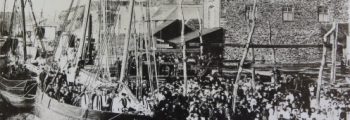
The 1871 Census shows a single man by the name of Henry M Restarick lodging at Ridgeway cottages in Northam. In 1871 he gave his occupation as “Ropemaker, employing 3 men and 3 boys.” In 1877 this same Henry Morgan Restarick (1833-1899) took over Johnson’s East-the-Water Shipyard (the Brunswick Wharf…
Read moreThe Manor and a Quay Part Company
20th March 1877
In 1877 H. M. Restarick took over Johnson’s shipyard, which appears to have lain on the site of The Key. In 1881 the Manor lands, with the express exclusion of Restarick’s shipyard, were sold to the Borough of Bideford. The Ordnance Survey 1-2500 map of 1888 (surveyed in 1886) shows…
Read moreNew Churches and a New Cemetery
20th March 1890
Restarick’s Chapel was not the only one that sprang up during the late 19th C. In 1880 an ‘Iron Church’ was established in Barnstaple Street and 1888 saw a Port Mission Chapel opened at Bank End. The Bank End chapel was founded by the Rev Roger Granville, the minister of…
Read moreShamwickshire
20th March 1890As the old shipyard sites at East the Water closed down a substantial new quay wall was built extending from the Cross Park goods yard to the Long Bridge. By 1891 the Long Bridge was already familiar with spectators amassing on it to watch the annual Bideford regatta, but in…
Read moreThe Bridge Gains a Bust
20th March 1893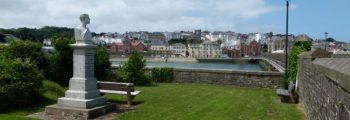
In 1893 East-the-Water gained another of its enduring landmarks. A bust of John Richard Pine-Coffin was erected by public subscription in the open space to the south of the Long Bridge. A distinguished military officer, a Deputy Lieutenant, a Justice of the Peace, Vice-Chairman of Bideford Board of Guardians, and…
Read moreAt the Turning of the Century
20th March 1900
With the beginning of the 21st Century seeing Bideford awash with new developments, it is interesting to reflect that the Book of Fair Devon published in 1900 stated that “The modern streets are wide, and the houses well built, especially those being constructed in the extensive building operations now going…
Read moreEdwardian (1901 – 1910)
No announcements found
House of Windsor (1910 to present)
Embellishing the Sewers
20th March 1911
In 1911 the catalogue of William MacFarlane & Co. of Glasgow featured a particularly elegant form of ironwork sewer vent, near identical specimens grace various parts of Bideford. MacFarlane & Co were leading producers of decorative ironwork and several of Bideford’s vents are now listed as ancient monuments. One may…
Read morePassing of the Potteries
20th March 1912
The potter James Redcliffe (or Redclift, 1833 or 34-) was also East-the Water based and at one time Henry Phillips’ partner. Redcliffe’s staff included Richard Branch and James Davis. In 1911 Phillips retired, selling the lease of the pottery, together with Prince its horse (at £1 per leg or £4…
Read moreRemembering the ‘War to End all Wars’
20th March 1914
With the onset of war in 1914 the demand for cordite shot up, as did the demand for the acetone needed to make it. In 1915 the Office of Woods and Forests established a wood alcohol plant in Bideford, which was then placed under the direct control of the Ministry…
Read moreTorridge becomes Tarka Country
20th March 1924
In 1924-5 the Long Bridge was widened and restored, but it was not long before another Torridge crossing was the focus of attention. In 1927 Henry Williamson published his most acclaimed book, Tarka the Otter. Williamson set Tarka’s birthplace as a holt beneath the Beam aqueduct, where the Rolle Canal…
Read moreSecond World War
20th March 1939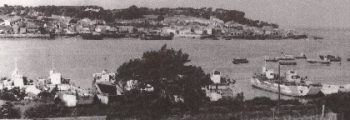
The Second World War saw many evacuated to Bideford, whilst in East-the-Water the Home Guard began to plan for the possible German invasion. They decided where to site their roadblocks and they set up a hidden depot at Cleave Mine that could support covert resistance should that be needed. Quite…
Read moreSevering Links
20th March 1963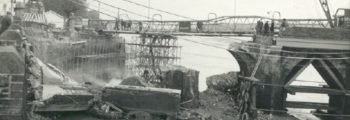
27 March 1963 saw the publication of Beeching’s report “The Reshaping of British Railways,” which made the closure of the rail line to Bideford one of its recommendations. Thus, 2 October 1965 saw the last passenger service leave Bideford Station, severing a major artery into the town. As some demand…
Read moreInitiatives to Improve the Area
20th March 1976
1976 saw Braunton Burrows established as a UNESCO Biosphere Reserve, because of its internationally important role in conservation. Ecologists have become increasingly aware that the viability of a reserve depends upon the pattern of land use in their hinterlands, so the reserve was subsequently expanded in 2002 to create buffer…
Read moreLinking North and West Devon
20th March 1986
The Long Bridge had never been built to handle the size of traffic now on our roads, so in 1986-7 the A39 took a different route. To do so required the building of the Torridge Bridge, an award winning pre-stressed concrete structure, which holds its 300m spans high above the…
Read moreTarka becomes a Trail
20th March 1991
In 1982 the rail transport of ball clay through East-the-Water finally ceased. Then, in 1987, the Taw/Torridge Country Park was established using the disused railway line between Barnstaple and Bideford, the line having been purchased from British Rail for £515,000. That was somewhat more than it cost Devon County Council…
Read moreThe Kathleen & May
20th March 2001
The last few sailing coasters to grace our shores all operated out of the Taw and Torridge ports. Of these, the last schooner was the Bideford registered Kathleen & May. After ending her working life in 1960 and then passing through a succession of other owners, she was bought by…
Read moreWant more information?
We've designed this website to cover just about everything we can things of about the hoistory of the Wharves, but if we've forgotten anything, or if you would like to volunteer please get in touch.
